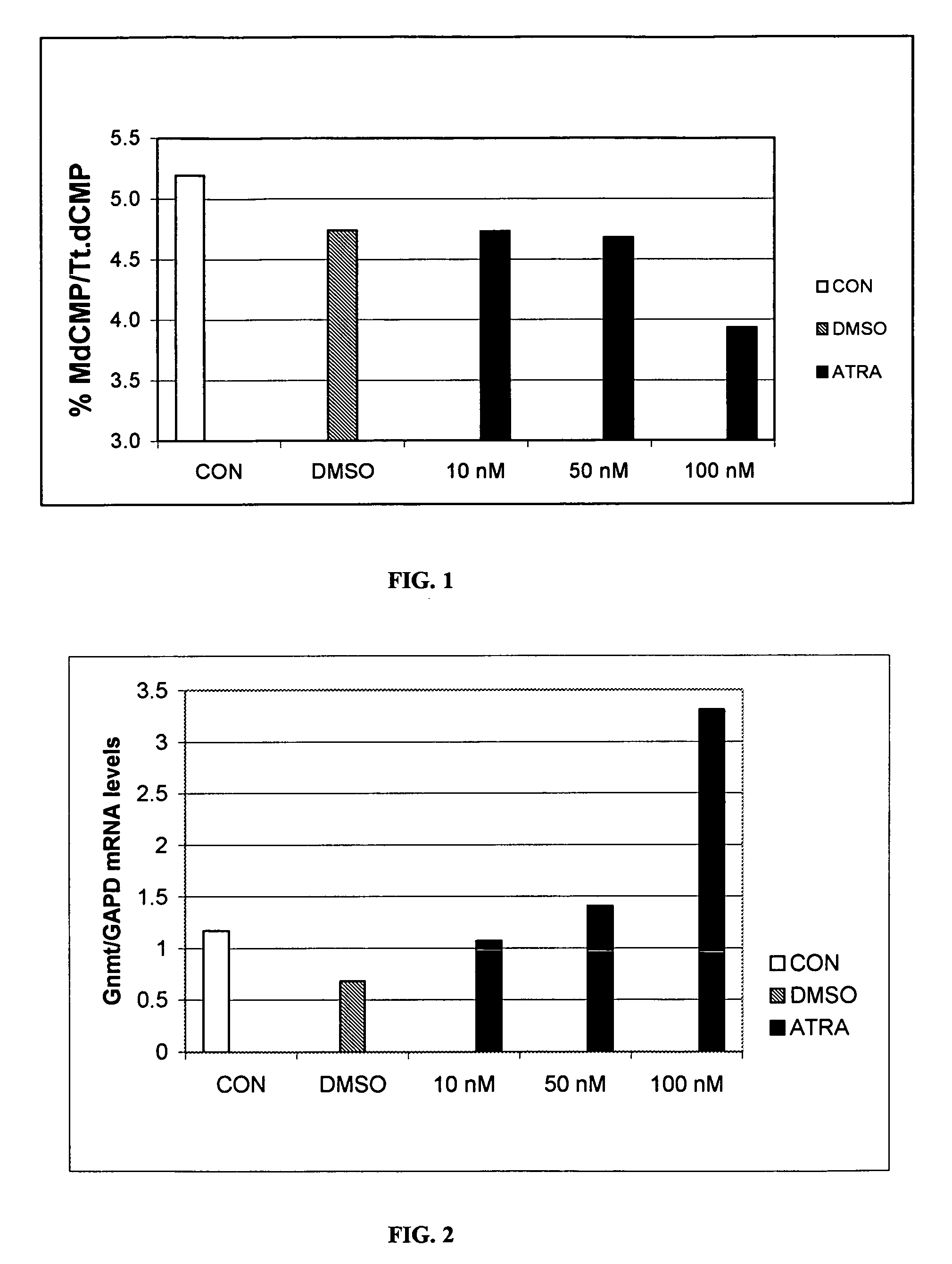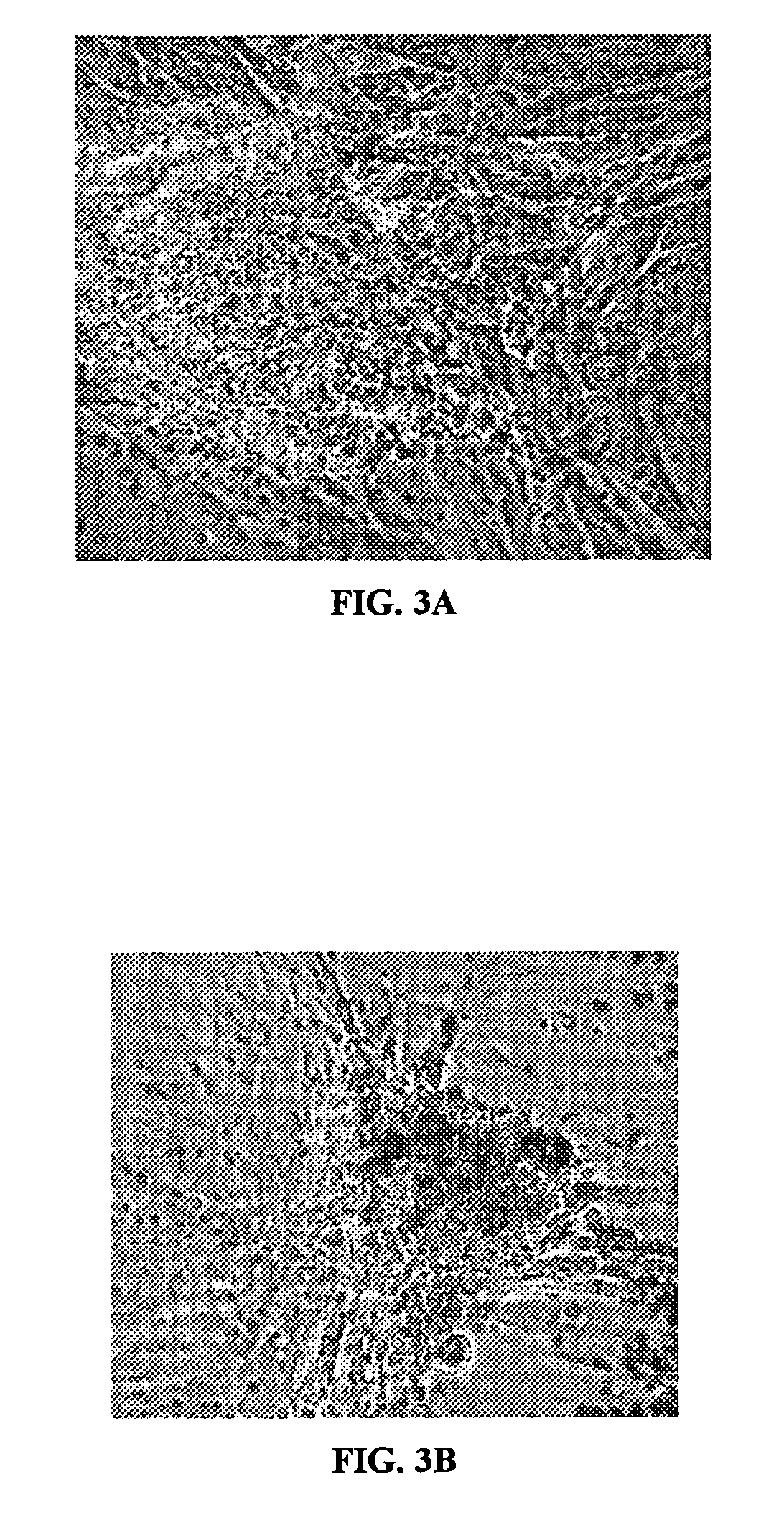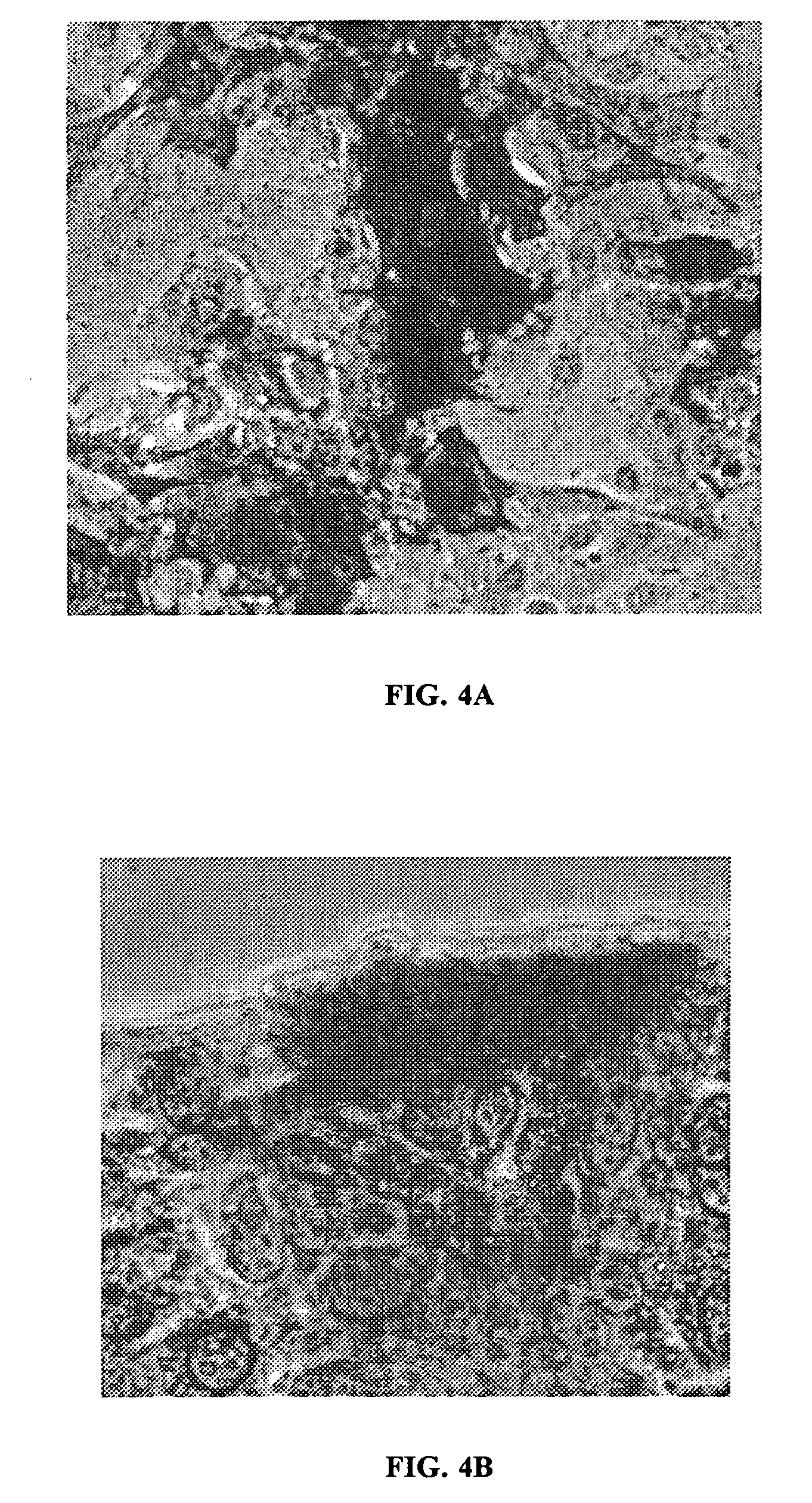Production of reprogrammed cells with restored potential
a technology of reprogramming and potential, applied in the field of cell reprogramming and cell-based therapeutics, can solve the problems of clone problems, high variability in the development of scnt embryos, and the direct method of removing the methyl group has either not been described or validated, so as to reduce the potential for immune rejection by the patient and reduce the number of complicating factors
- Summary
- Abstract
- Description
- Claims
- Application Information
AI Technical Summary
Benefits of technology
Problems solved by technology
Method used
Image
Examples
example 1
Effects of RA on Bovine Somatic Cell Methylation
[0188] Bovine serial nuclear transfer donor somatic cells (a cell line that has never produced a successful live animal and which is characterized by low blastocyst development rates (<10%, P<0.001) and low pregnancy initiation rates (<1%, P<0.05)) were cultured in T-75 flasks until confluent in growth media (CON), or growth media treated with DMSO, or ATRA (DMSO vehicle); 10 nM, 50 nM, and 100 nM ATRA concentrations were used. Following ATRA treatment, the cells were collected and DNA from the cells was isolated. The DNA was then completely digested into single nucleotides for reverse-phase HPLC. Reverse-phase HPLC was performed as described by Cezar et al. [76] to measure the relative levels of methylated cytosine residues.
[0189] As illustrated in FIG. 1, HPLC revealed a 25% reduction in relative methylated cytosine in those cells cultured in 100 nM ATRA-treated media compared to CON. Those treated with DMSO or 10-50 nM ATRA exhibi...
example 2
Effects of RA and Adipogenic Induction Cocktail on Bovine Somatic Cells
[0192] To determine whether differentiation potential was restored, bovine somatic cells were cultured in T-75 flasks until confluent in CON, DMSO, or ATRA media (same RA as in Example 1). Following ATRA treatment, cells were collected for RNA isolation or transferred to 6-well plates and cultured in an adipogenic induction cocktail that included DMEM, FBS, insulin, IBMX and dexamethasone. The IBMX was removed and TZD was added 48 hours later. Cells remained in the induction media for 11-12 days, then were either oil red-O-stained (Aldrich, Milwaukee, Wis.) to ascertain the presence of lipid droplets, or collected for RNA isolation. RNA was reverse-transcribed to cDNA for RT-PCR for stem cell markers (Oct 4, Sox2, Nanog, AP) and adipogenic markers (PPARγ, LPL, FAS), or used directly in one-step quantitative real-time RT-PCR for GNMT. Glyceraldehyde-3-phosphate dehydrogenase (GAPDH) was used as a normalizing / hous...
example 3
Effects of RA and Adipogenic Induction Cocktail on Primary Hepatocytes
[0194] Primary rat hepatocytes were grown in media treated with 50-200 mM ATRA. Following treatment, cells were cultured under the same comparative conditions as described above for the bovine somatic cells, except an adipogenic induction cocktail (as described in Example 2) was added to the T-75 flasks. Morphological changes were observed during ATRA treatment, and within 48 hours after initial exposure to induction media, these changes became pronounced. By day 4 of exposure to adipogenic induction media, these morphological changes were accompanied by the beginnings of spheroid body development and distinct proliferation of cells as evidenced by confluency, a state not reached in control cells. These observations suggest that these primary hepatocytes that are terminally differentiated re-entered the cell cycle following ATRA treatment and exposure to adipogenic induction media in culture and proliferated sign...
PUM
| Property | Measurement | Unit |
|---|---|---|
| Fraction | aaaaa | aaaaa |
| Fraction | aaaaa | aaaaa |
| Fraction | aaaaa | aaaaa |
Abstract
Description
Claims
Application Information
 Login to View More
Login to View More - R&D
- Intellectual Property
- Life Sciences
- Materials
- Tech Scout
- Unparalleled Data Quality
- Higher Quality Content
- 60% Fewer Hallucinations
Browse by: Latest US Patents, China's latest patents, Technical Efficacy Thesaurus, Application Domain, Technology Topic, Popular Technical Reports.
© 2025 PatSnap. All rights reserved.Legal|Privacy policy|Modern Slavery Act Transparency Statement|Sitemap|About US| Contact US: help@patsnap.com



